I have been asked many times if one character can beat multiple opponents. My answer is always, “tell me more,” because it’s not really a question that has a single, cut and dried answer. There are a lot of variables. It’s far more plausible that one character can best multiple opponents rather than beat them. But I will leave that tidbit up to your brain and keyboard.
For this post, we will look at basic plans that any character, or writer, can follow when in the awful situation of fighting multiple opponents. The strategies are different depending upon how many opponents your character is facing. And, we are going to assume that special abilities or weaponry won’t come into play.
First, as always, you have to look at the 3 Ws: why, where and who. I cover the three Ws in the first section of my book and teach a class on them with Writer’s Digest University. The 3 Ws determine just about everything in any fight both on and off the page and greatly impact scenarios with multiple opponents. So, give the book and my class a gander.
Movie tropes
Before we jump headlong into realistic strategies, let’s dispel some common movie tropes:
Attackers wait their turn.
When a character is facing multiple opponents, the opponents don’t take a number and wait like they’re at a deli. They all descend at once. I interviewed a lady on my FightWrite™ blog who was attacked by half a dozen people. She reported that they all beat her at the same time head to toe. CCTV footage of such attacks shows the same.
Assailants act civilized.
If your character is attacked on the street, they will be ATTACKED. It will not be a civilized exchange of jabs. There will be stomping, scratching, hair pulling, tackling, tearing at body piercings and skin, fish hooking, bone breaking, bludgeoning, stabbing… You get the jist. And when you increase the number of attackers, the threat of brutality goes up exponentially. The more people involved in the assault, the more likely that pack mentality will prevail, and pack mentality is seldom peaceful or prudent.
Victims can defend themselves by any means.
This trope is downright dangerous because it perpetuates not only an untrue assumption but an unsafe one as well. If the setting of your work is modern, you need to be aware of the laws of the land in which your character lives. In my book, there’s an entire chapter written by a lawyer who is also a black belt in Brazilian jiu-jitsu. He explains the difference in deadly force and regular force as well as what is considered reasonable self-defense. That word is in italics because there is no legal definition of it. Reasonable is whatever a jury deems it to be.
Deadly force
The laws in most states allow the use of deadly force when three requirements are met. A person must have a reasonable belief that they are in imminent danger of unlawful or deadly force and must use a corresponding amount of force to defend their own self. That means if someone threatens your character by saying, “I’m gonna kill you next week,” your character cannot shoot them on the spot because that’s not imminent danger. Your character also cannot put them in a choke hold to teach them lesson as a choke hold is deadly force and doesn’t correspond to the threat of being killed next week.
However, if your character is threatened by multiple people, that generally allows for deadly force as it increases the reasonable belief of imminent danger. I say all that because some of the tactics I mention may involve deadly force and I needed to explain why that is warranted here and, by definition in MOST states, legal. It may not be in your state or the one in which your character lives. And, it may not apply to being threatened by an individual.
Two against one
When faced with two assailants, your character needs to put a buffer between their own self and the attackers. That buffer might be a clothing rack, a chair, a bush, anything that the assailants must get around to get to your character. The extra few moments it takes the bad guys to get around the buffer to your character may be enough time for the would-be victim to escape.
No injury option
If there is no buffer, your character will want to satellite one of the villains. By that I mean that they would circle that villain, keeping them as a buffer from villain two. So, if villain two moves left, your character will circle around that first villain, keeping villain two at bay. The circular motion is key. Your assailed character wants to avoid walking backward if at all possible. They can’t see what or who is behind them or if their attackers are pushing them toward a place that traps them. Also, if they back away from the villain they are satelliting, there will no longer be a barrier for villain two. So, your poor character will be back to fighting two at the same time. Instead, keep your good guy orbiting villain one, keeping villain two away, until escape is possible, help arrives or the whole thing de-escalates.
Injury option
If physical contact is needed in your scene, I suggest your threatened character strike first. Have them look at one of the villains in the eye, perhaps speak to them, and then strike the other villain in the throat or eyes. By focusing on one, the second will more likely be caught off guard. For the record, both of those strikes are considered deadly force. Deadly force doesn’t have to kill anyone. It only has to have the potential to kill or cause serious bodily injury. But, again, the two against one situation can allow for it.
When struck in the eyes or throat, the villain should become incapacitated. The throat strike could actually kill them. With villain one incapacitated or killed, hopefully the second villain will seriously re-think attacking. But, if the second villain persists, your character can use the incapacitated assailant as a body shield provided they are alive. If they are dispatched, things get real cumbersome real quick. Your character could put the alive and injured character in a choke hold from behind, only tightening when that character resists the choke. I would not do a choke hold from the front, with the villain bending forward, as the villain could, in turn, reach out and take hold of your good guy .
Your assailed character could also control the shield character’s arms behind that character’s back and move them as the second villain moves. To control the villain’s arms behind them, your character could put the villain in a “full Nelson,” reaching under the villain’s arms from behind then bracing your good character’s hands behind the villain’s neck. Or, if your character is too short for that technique, they can pull the villain’s arms behind the villain’s back and wrap their own arms around the villain’s elbows, binding the villain’s arms together. In all cases, your assailed character would move the shield villain around as a buffer between them and the second villain. Remember that the bad guy used as a shield has to be hurt enough that your character is able to control them. And as before, your good guy needs to circle rather than walk backward. This whole schtick really does work. I’ve done it in training.
Three against one
When facing three opponents, your character would do well to still satellite one opponent at the time and keep them as a buffer from the other two. However, the defender will likely have to switch up and satellite different ones as the fight progresses. To best the trio, your character will have to do enough damage to take them out one-by-one while also not allowing the other attackers to assail. It’s a tough scenario. I’ve worked it in training and the defender has to move a lot and still in that circular pattern. It is very easy for three to maneuver the one into a corner. This is a time when a weapon comes in real handy!
More than three
The chances of besting multiple opponents go down sharply as the number of opponents goes up. Yes, there may be fight masters who can do it but they are few and far between. When assailed by more than two or three, your character will need to face their combatants and move backward. Yes, I know earlier I said not to walk backward. Stay with me.
When your character walks backward, they keep their combatants in sight and will hopefully force the assailants into a bottlenecked, triangular formation. Your vulnerable character must not allow any assailants to move beyond their peripheral. That may mean they must walk backward faster, if not jog, and glance over their shoulders as they do. But, they should only glance. They must keep their eyes on the coming throng.
To escape the assailing group, your character needs buffers. They can dart into a crowd which gives them some barriers and allows them to hide in plain sight. They can also go through a narrow passageway where the assailants can only move through one at a time. Your escaping character could then pick them off one-by-one. The good guy can also run into an area that is cluttered and hide. However, bear in mind that hiding can make your character a sitting duck. When possible, your character should hide in a place that doesn’t trap them. I tend to favor the concept that there is no refuge where there is no escape.
Facing more than one opponent is a tough situation. As you write, be mindful that the blocking doesn’t become too complex. My tip for that is only write what would be illustrated in a cartoon panel. Here’s what I mean. Rather than saying “Kermit maneuvered behind Gonzo, wound his felt arms under Gonzo’s and pulled Gonzo’s arms back before bracing his green hands behind Gonzo’s blue neck, effectively controlling Gonzo’s every move,” perhaps write, “Kermit pulled Gonzo’s arms back and held them tight, using Gonzo as a furry shield.” Trust me, the reader cares more about the fact that poor little Gonzo is being used a fuzzy bulwark than whether or not Kermit executed the technique correctly.
That’s it for this round at FightWrite. Until the next round, get blood on your pages!




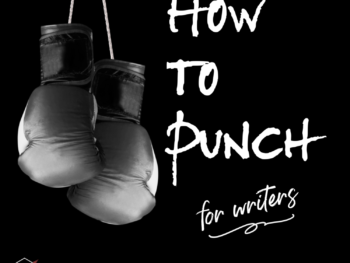
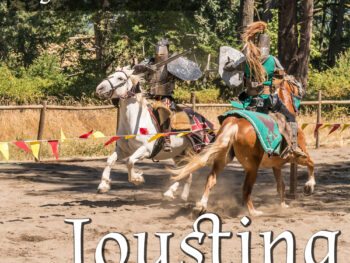

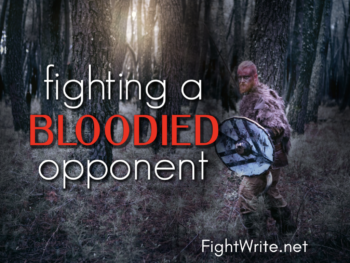
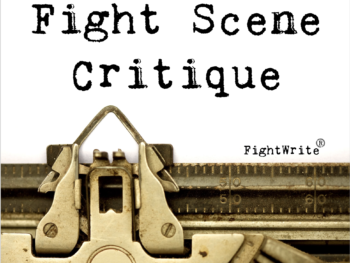
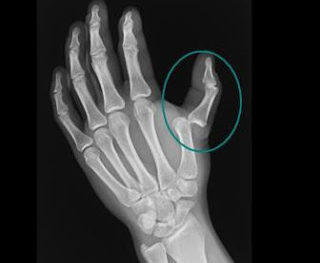
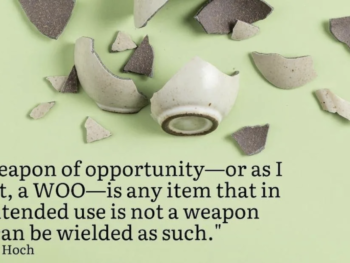
I agree completely. Thank you. I just need an extra hour in the day and I will get on it. 🙂
An interesting discussion is worth comment. I think that you should write more on this topic, it might not be a taboo subject but generally people are not enough to speak on such topics. To the next. Cheers
My brother recommended I might like this web site. He was totally right. This post truly made my day. You can not imagine just how much time I had spent for this info! Thanks!
Very interesting info !Perfect just what I was looking for!
I have been absent for a while, but now I remember why I used to love this site. Thanks, I’ll try and check back more frequently. How frequently you update your site?
Hey! I know this is kinda off topic nevertheless I’d figured I’d ask. Would you be interested in exchanging links or maybe guest writing a blog article or vice-versa? My site goes over a lot of the same topics as yours and I believe we could greatly benefit from each other. If you’re interested feel free to shoot me an email. I look forward to hearing from you! Superb blog by the way!